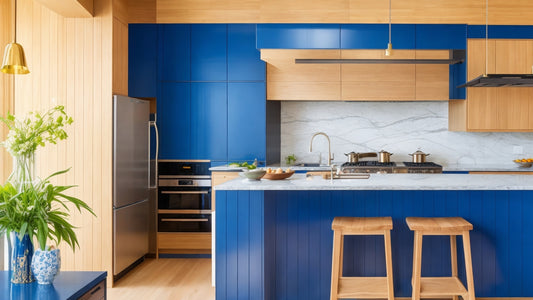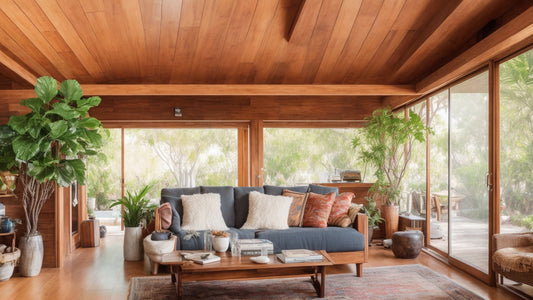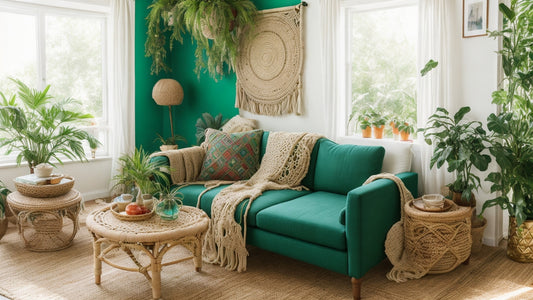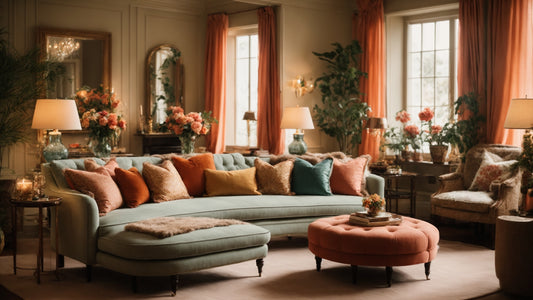9 Steps to Furnishing Your Space
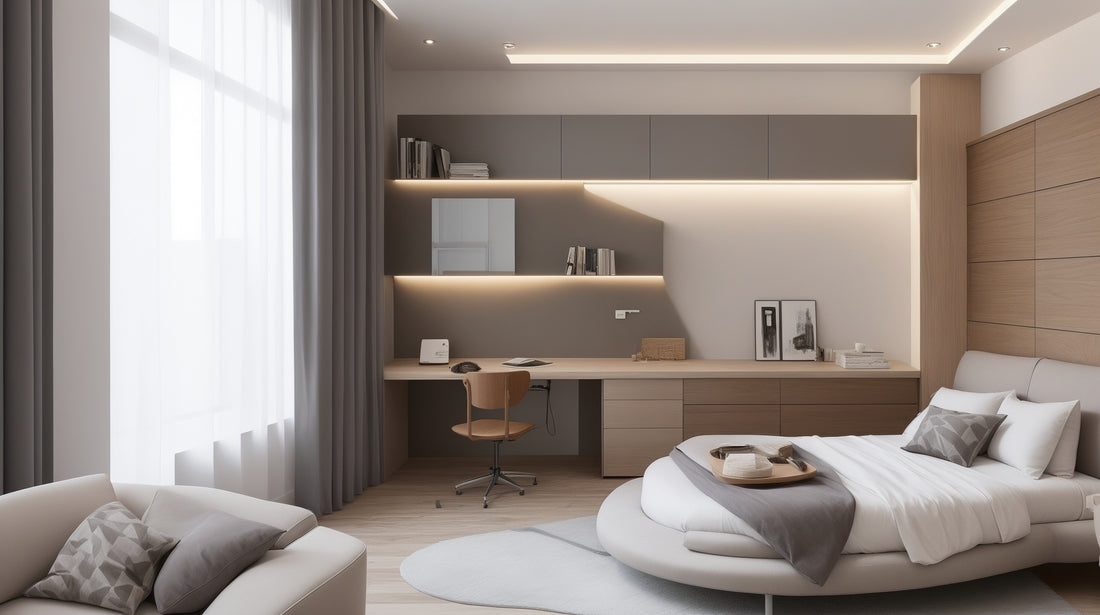
Share
How to Choose the Right Furniture for Your Space
1. Determine your needs and budget
The first step in choosing furniture is to determine your needs and budget. What activities will you be doing in the space? How many people do you need to seat? How much storage space do you need? Once you have a good understanding of your needs, you can start to set a budget.
Keep in mind that furniture is a long-term investment, so it's worth spending a little more on pieces that you love and that will last for years to come. However, there are also many affordable furniture options available, so don't be afraid to shop around.
Here are a few questions to ask yourself to help you determine your needs:
- What is the main purpose of the space? Will it be used for entertaining guests, relaxing with family, or working from home?
- How many people will be using the space on a regular basis?
- What kind of activities will you be doing in the space? Will you be watching TV, eating meals, reading, or playing games?
- How much storage space do you need? Do you need to store clothes, toys, books, or office supplies?
Once you have a good understanding of your needs, you can start to set a budget. Be realistic about how much you can afford to spend on furniture, and keep in mind that you may need to spread out your purchases over time.
2. Measure your space
Once you know what you need and how much you're willing to spend, it's time to start measuring your space. This will help you to choose furniture that is the right size and scale for your room.
Be sure to measure the length, width, and height of the space, as well as the doorways and walkways. You'll also want to take note of any obstacles, such as fireplaces or radiators.
It's a good idea to create a floor plan of your space to help you visualize how different pieces of furniture will fit. You can use graph paper or a computer software program to create your floor plan.
3. Consider the layout of your space
When choosing furniture, it's important to consider the layout of your space. Think about how you want to use the space and how the furniture will be arranged.
For example, if you have a small living room, you'll want to choose furniture that is scaled to the space and that won't make the room feel cramped. You may also want to consider using multi-purpose furniture, such as a coffee table with storage or a sofa bed.
If you have a large living room, you may want to create multiple conversation areas. This will help to make the room feel more inviting and comfortable. You can use rugs, accent tables, and floor lamps to define different spaces in the room.
4. Choose the right style
Once you have considered your needs, budget, and space, it's time to choose the right style of furniture. There are many different furniture styles to choose from, so it's important to find a style that reflects your personal taste and that will complement the overall décor of your home.
If you're not sure where to start, try looking at magazines and websites for inspiration. You can also visit furniture stores and browse through their collections.
Here are a few tips for choosing the right furniture style:
- Consider your overall home décor: The style of your furniture should complement the overall décor of your home. If you have a traditional home, you'll want to choose furniture in a traditional style. If you have a modern home, you'll want to choose furniture in a modern style.
- Think about your lifestyle: Your furniture style should also reflect your lifestyle. If you have young children, you'll want to choose furniture that is durable and easy to clean. If you have pets, you'll want to choose furniture that is pet-friendly.
- Don't be afraid to mix and match styles: You don't have to choose furniture in all the same style. You can mix and match different styles to create a unique look. For example, you could pair a traditional sofa with a modern coffee table.
5. Select the right pieces
Now that you know what style of furniture you want, it's time to select the right pieces. When choosing furniture, it's important to consider the following factors:
- Size and scale: Make sure that the furniture is the right size and scale for your space. You don't want to choose pieces that are too big or too small.
- Functionality: Consider how you will be using the furniture. For example, if you need a lot of storage space, you'll want to choose furniture with built-in storage. If you have young children, you'll want to choose furniture that is easy to clean.
- Comfort: Make sure that the furniture is comfortable to sit and relax in. If you're buying a sofa, for example, sit on it for a few minutes to make sure that it's the right height and firmness for you.
- Quality: Choose furniture that is made from high-quality materials and construction. This will help to ensure that your furniture lasts for many years to come.
Here are a few tips for selecting the right furniture for each room in your home:
Living room:
- Choose a sofa or sectional that is the right size for your space and that will accommodate the number of people who will be using it.
- Consider adding a coffee table and end tables to provide a place to set drinks and snacks.
- If you have a fireplace, choose furniture that is arranged around the fireplace to create a focal point in the room.
- Add a rug to define the seating area and to add warmth and style to the room.
Dining room:
- Choose a dining table that is the right size for your space and that will accommodate the number of people who will be using it.
- Make sure that the dining table is the right height for the chairs.
- Choose chairs that are comfortable to sit in for long periods of time.
- Add a rug to define the dining area and to protect the floor from spills.
Bedroom:
- Choose a bed that is the right size for your space and that will accommodate the number of people who will be sleeping in it.
- Consider adding a nightstand on each side of the bed to provide a place to set a lamp, alarm clock, and other items.
- Add a dresser or armoire to provide storage space for clothes and other belongings.
- Add a rug to define the sleeping area and to add warmth and style to the room.
Home office:
- Choose a desk that is the right size for your space and that will accommodate your computer and other office supplies.
- Choose a chair that is comfortable to sit in for long periods of time.
- Add a bookcase or filing cabinet to provide storage space for books, papers, and other supplies.
- Add a rug to define the workspace and to protect the floor from spills.
6. Shop around and compare prices
Once you have selected the pieces of furniture that you want, it's time to start shopping around and comparing prices. Be sure to check out both online and brick-and-mortar stores to get the best deals.
Also, keep an eye out for sales and promotions. Many furniture stores offer sales throughout the year, so you can save a significant amount of money by waiting for a sale.
7. Consider buying used furniture
Another way to save money on furniture is to buy used furniture. There are many great places to buy used furniture, such as thrift stores, consignment shops, and online marketplaces.
When buying used furniture, be sure to inspect it carefully for any damage. You should also ask the seller about the history of the furniture, such as where it came from and how it was used.
8. Don't be afraid to negotiate
Once you've found the perfect piece of furniture, don't be afraid to negotiate with the seller. Many furniture stores are willing to negotiate on price, especially if you're buying multiple pieces of furniture.
Here are a few tips for negotiating:
- Be polite and respectful.
- Be prepared to walk away if you can't get a good deal.
- Consider asking for a free delivery or assembly.
- Be willing to compromise.
9. Take your time and enjoy the process
Choosing furniture for your home is a big decision, so it's important to take your time and enjoy the process. Don't rush into anything. Take your time to shop around, compare prices, and find the pieces of furniture that you love.
Once you've found the perfect pieces of furniture, it will all be worth it. You'll have a home that is both comfortable and stylish.
Here are a few additional tips for choosing the right furniture for your space:
- Consider the traffic flow in your home: When choosing furniture, it's important to consider the traffic flow in your home. You don't want to place furniture in a way that blocks walkways or makes it difficult to move around.
- Use vertical space: If you have a small space, consider using vertical space to your advantage. For example, you can hang shelves on the walls or choose furniture with tall storage units.
- Use light colors: Light colors can make a small space feel larger and brighter. When choosing furniture, consider choosing pieces in light colors.
- Add mirrors: Mirrors can also help to make a small space feel larger. Place mirrors in strategic locations to reflect light and create the illusion of space.
- Don't be afraid to mix and match: You don't have to buy all of your furniture from the same store or in the same style. Mixing and matching different styles can create a unique and personal look.
Once you've chosen the right furniture for your space, it's important to arrange it in a way that is both functional and stylish. Here are a few tips:
- Create a focal point: Every room should have a focal point, such as a fireplace, TV, or large window. Arrange your furniture around the focal point to create a sense of balance and harmony.
- Leave enough space: Make sure to leave enough space between pieces of furniture so that people can move around comfortably. You don't want to overcrowd the room.
- Use rugs: Rugs can help to define different areas in a room and to create a sense of warmth and coziness.
- Add accessories: Accessories, such as pillows, throws, and plants, can add personality and style to a room. Don't be afraid to add accessories to your furniture.


